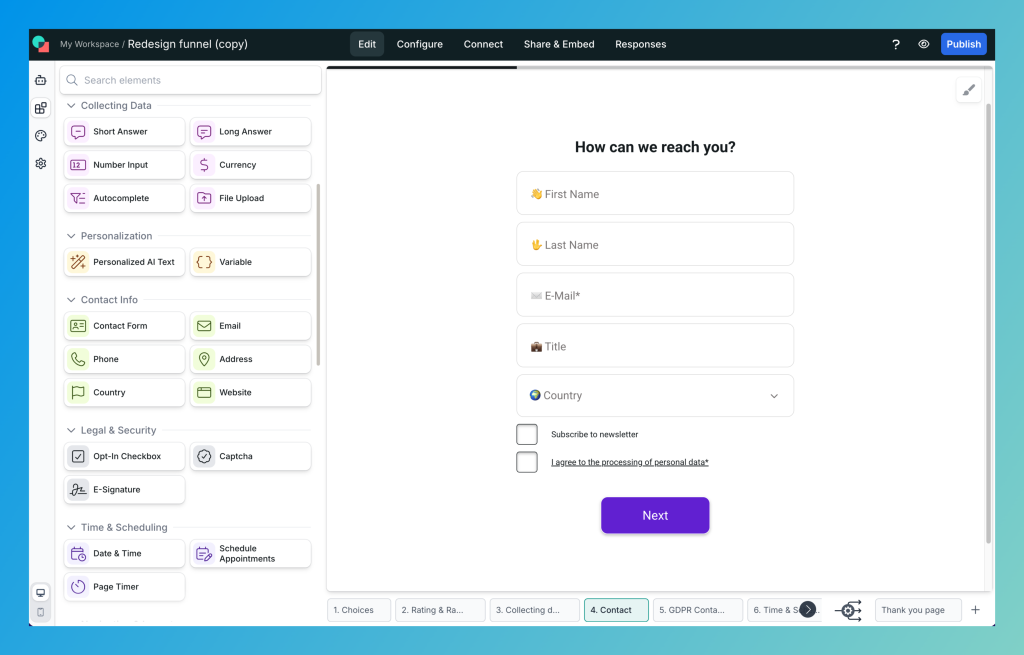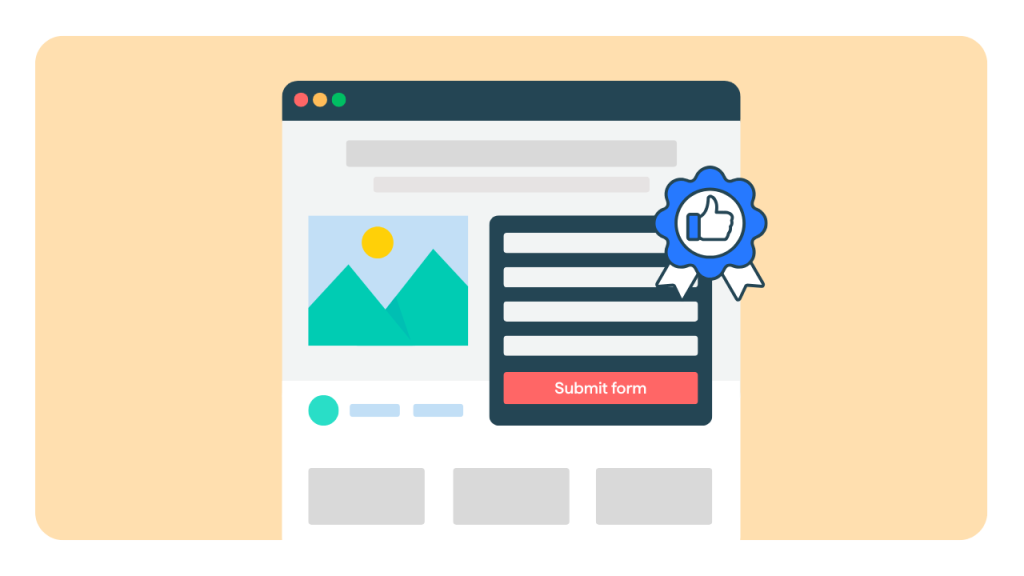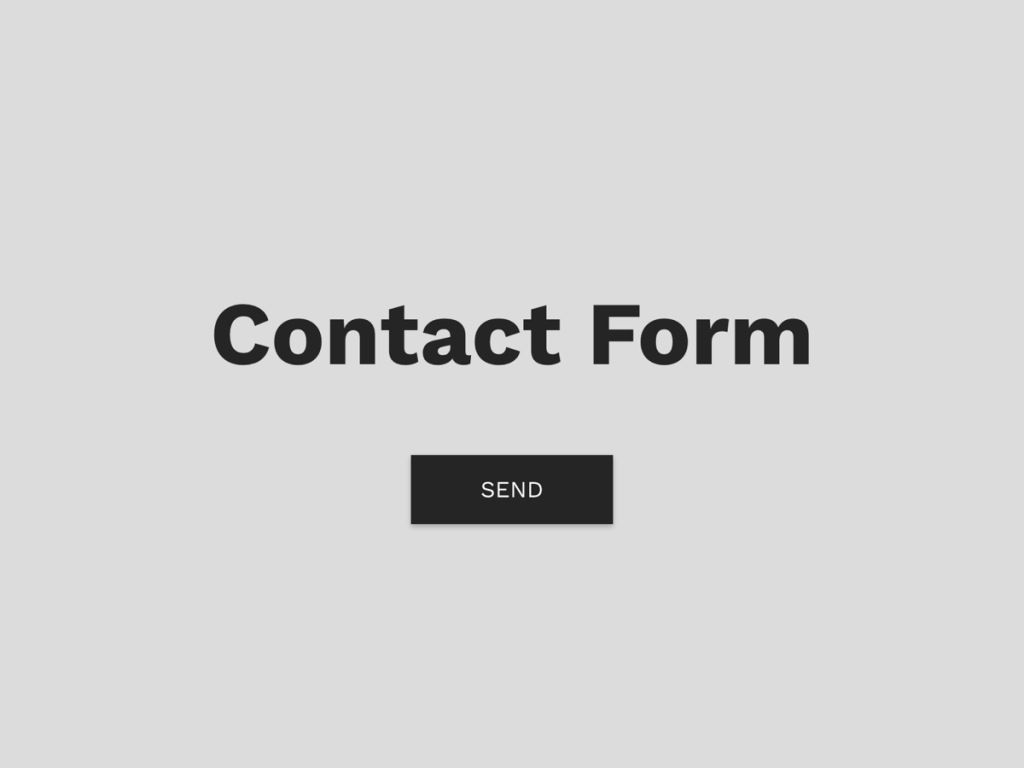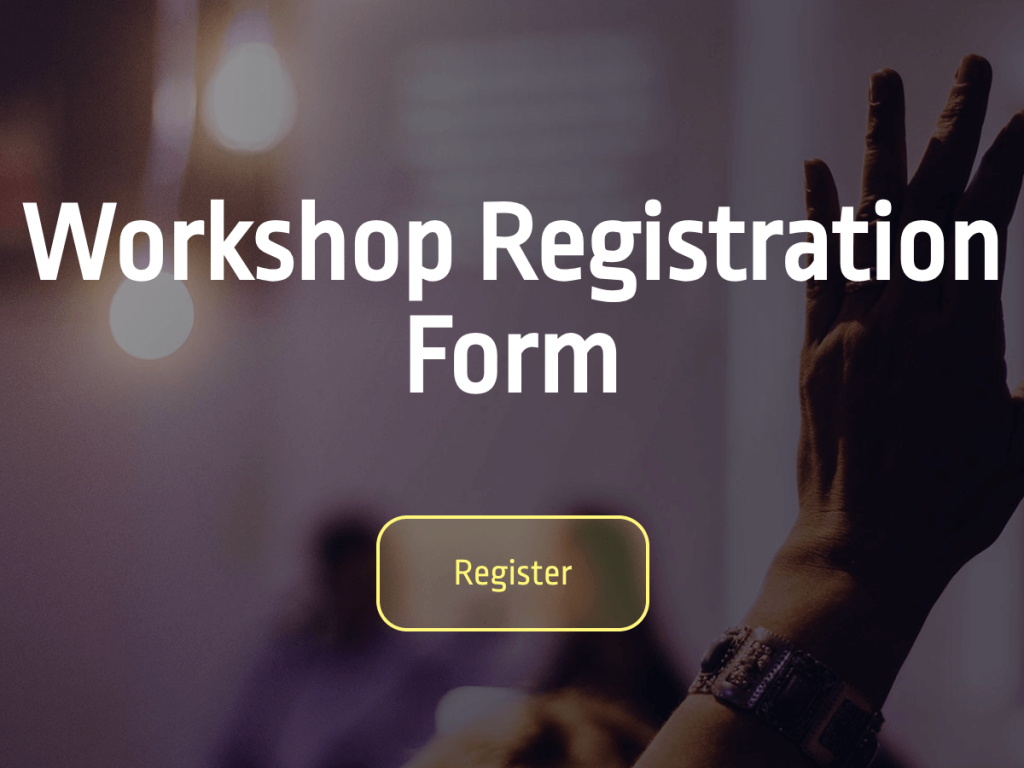Form best practices are essential design principles that can increase form completion rates by up to 120% and directly impact your business revenue.
Poor form design causes 67% of shopping cart abandonment and billions in lost conversions annually, making effective forms a critical business necessity rather than just a UX consideration.
This comprehensive guide addresses the search intent for actionable form design guidance by providing proven strategies that transform poorly designed forms into conversion machines.
What does this guide cover?
This guide covers comprehensive form best practices from basic design principles to advanced optimization techniques. You’ll learn field optimization strategies, layout principles, validation techniques, and mobile considerations that directly impact form completion rates and business outcomes. Ensure forms comply with accessibility standards by using semantic HTML and offering sufficient color contrast.
Who is this for?
This guide is designed for UX/UI designers, developers, marketers, and business owners creating or optimizing web forms. Whether you’re designing your first landing page form or optimizing existing website forms for better conversions, you’ll find specific, implementable strategies.
Why does this matter?
Forms serve as critical touchpoints in the customer journey where visitors become leads, prospects become customers, and browsers become buyers. Every poorly designed form represents lost revenue, while well-optimized forms can increase conversions by double or triple digits.
What you’ll learn:
Field optimization strategies that reduce abandonment by 50%
Layout principles that improve completion rates by 15.4%
Validation techniques that prevent 40% of error-related abandonments
Mobile considerations that boost smartphone conversions
Understanding Form Design Fundamentals
Form best practices encompass design, usability, and accessibility principles that maximize completion rates, data quality, and user satisfaction while minimizing user frustration and abandonment.
Forms represent one of the most important conversion points in digital marketing and user experience design. They serve as the bridge between user interest and business value, whether collecting contact information, processing purchases, or gathering user feedback.
The connection between form usability and business outcomes is direct and measurable. Companies implementing form design best practices report conversion improvements ranging from 25% to 300%, depending on their starting point and implementation quality.

Essential Form Components
Form elements include input fields, labels, buttons, validation messages, and visual design elements that guide users through the completion process. Each component contributes to overall form effectiveness by either reducing or increasing cognitive load on users.
Clear labels enable users to understand what information to provide, while well-designed input fields make data entry intuitive. Labels should be short, descriptive, and in sentence case, avoiding all caps and jargon.
Error messages communicate validation requirements, and strategic button placement guides users toward successful form submissions.
The Psychology of Form Completion
User behavior patterns reveal that most users approach online forms with skepticism and limited patience. Display trust signals such as security badges and privacy policy links to reassure users about data security. It's important as users typically scan forms before deciding whether to complete them, evaluating the time investment against perceived value.
Cognitive load factors significantly influence form abandonment rates. Each additional form field, confusing label, or unclear instruction increases the mental effort required, making users more likely to abandon the process. This connects directly to conversion principles, where reducing friction improves completion rates.
Understanding these foundational concepts enables us to examine specific layout and structure strategies that optimize form performance.
Essential Layout and Structure Principles
Building on form design fundamentals, specific layout strategies can dramatically improve user experience and completion rates through strategic visual organization and information architecture.
Key points: |
Single-column layouts improve completion by 15.4% |
Every additional field reduces conversions by 5-10% |
Easy-to-hard ordering leverages commitment psychology |
Single-Column Layout Strategy
Research consistently shows that single-column layouts improve form completion rates by 15.4% compared to multi-column forms. Users complete single-column forms faster because they follow a natural top-to-bottom scanning pattern without confusion about field relationships or completion order.
Single columns eliminate the ambiguity present in multiple columns about which fields to complete first. The visual flow benefits include reduced eye movement, clearer completion paths, and decreased cognitive load when processing form requirements.
Multi-column layouts might be acceptable in certain circumstances, such as grouping related address fields or payment information on the same line, but should be used sparingly and only when logical relationships are obvious.
Field Minimization Techniques
Data consistently demonstrates that each additional field reduces completion rates by 5-10%, with forms containing more than 8 fields showing completion rates below 10%. Effective field minimization requires identifying truly necessary versus nice-to-have information through careful analysis of business requirements.
Strategies for reducing form fields include combining related information into single fields, using conditional logic to display certain fields only when relevant, and implementing progressive disclosure where additional questions appear based on previous answers.
Methods for progressive disclosure include:
Multi-step forms that break long forms into digestible sections
Conditional fields that appear based on user selections
Optional fields clearly marked to indicate their non-essential nature
Smart Field Ordering and Grouping
Arranging fields from easiest to hardest leverages psychological commitment principles, where users become more invested in completion as they progress. Start with simple information like names and email addresses before requesting sensitive data like phone numbers or financial information. Avoiding the use of captchas in forms prevents flow interruptions that can lead to user abandonment.
Logical grouping strategies organize related information together, such as grouping all contact information in one section and billing details in another. This approach helps users understand the data collection structure and reduces confusion about information requirements.
Visual separation techniques using whitespace and section headers create clear boundaries between different types of information, making forms appear less overwhelming and more organized.
These layout principles provide the foundation for implementing more sophisticated validation and optimization strategies.
Advanced Implementation Strategies
Context-setting paragraph building on layout principles, sophisticated form optimization requires implementation of real-time feedback systems and carefully designed user interface elements that guide users toward successful completion.
Effective form design focuses on simplicity, clarity, accessibility, and immediate feedback to reduce user frustration and increase completion rates.
Step-by-Step: Implementing Real-Time Validation
When to use this: For forms requiring immediate feedback for accuracy, such as registration forms, checkout processes, or data collection forms, where preventing errors is more important than completion speed.
Set up inline validation triggers: Configure validation to activate on field blur events (when users move to the next field) rather than on keystroke to avoid interrupting user input flow.
Design clear, helpful error messages: Create specific error messages that explain exactly what’s wrong and how to fix it, avoiding generic messages like “invalid input” in favor of “Please enter a valid email address (example@domain.com).”
Implement positive confirmation: Display subtle visual confirmation (like green checkmarks) for correctly filled fields to reinforce progress and build user confidence.
Configure appropriate validation timing: Balance immediate feedback with user patience by validating critical fields immediately while allowing more complex fields to validate after completion.
Comparison: Inline Validation Vs Submit Validation
Feature | Inline Validation | Submit Validation |
Error Prevention | Catches errors immediately | Discovers all errors at once |
User Experience | Smoother, less frustrating | Can cause form resubmission |
Completion Time | 22% faster average completion | Longer due to error correction cycles |
Technical Complexity | More complex to implement | Simpler implementation |
In short...
Inline validation: Best for forms where accuracy is critical and users benefit from immediate feedback
Submit validation: Best for simpler forms where implementation speed matters more than optimization
Understanding validation approaches helps address common challenges that prevent successful form implementation.
Common Form Design Challenges and Solutions
Even well-designed forms encounter predictable challenges that can be addressed through specific design and technical solutions. Use analytics, heatmaps, and user testing to monitor form performance and identify areas for improvement.
Challenge 1: High Mobile Abandonment Rates
Solution: Implement touch-friendly design with 44px minimum touch targets and mobile-optimized input types that trigger appropriate keyboards for different data types (eg. Numbers, text,...).
Mobile devices require special consideration for form fields, including larger touch targets, appropriate input types (tel for phone numbers, email for email addresses), and simplified layouts that work effectively on smaller screens.
--> Forms must be fully functional on any device, featuring large, touch-friendly buttons and input fields.
Challenge 2: Poor Error Message Comprehension
Solution: Use plain language error messages with specific correction guidance that help users understand exactly what went wrong and how to fix it.
Examples of effective error messaging include “Please enter your phone number including area code (555-123-4567)” instead of “Invalid phone number format” or “Password must contain at least 8 characters including one number” rather than “Password requirements not met.”
Challenge 3: Low Conversion on Multi-Step Forms
Solution: Add progress indicators and save user data between steps to reduce abandonment and build user confidence in the completion process.
Supporting information about step optimization includes:
Keeping each step focused on related information
Clearly communicating the total number of steps
Allowing users to return to previous steps to make corrections without losing data
These solutions provide the foundation for implementing comprehensive form optimization strategies.
Leveraging involve.me for High-Converting Online Forms
After learning about all these form design best practices, the next step is choosing the right platform to implement them efficiently.
Involve.me is an interactive online form and funnel builder that seamlessly incorporates these best practices, making it easier to design high-converting forms without coding or design expertise.

No-Code Builder with Optimized Templates
Involve.me provides a user-friendly drag-and-drop form builder, along with an AI agent and hundreds of professionally designed templates that already follow conversion best practices.
Instead of starting from a blank canvas, you can choose a template tailored for your use case (lead capture, registration, checkout, surveys, etc.) that employs single-column layouts, clear microcopy, and an intuitive flow.
Each template is fully customizable, so you can adjust fields and design elements to match your brand while still leveraging a solid best-practice foundation. This means faster form creation and confidence that your form’s layout and fields are optimized from the get-go.
Get started with a form template
Dynamic, Interactive Form Capabilities
What truly sets involve.me apart is its ability to create dynamic, personalized form experiences with zero coding.
You can easily implement multi-step forms that walk the user through one bite-sized section at a time, without overwhelming them.
In fact, involve.me’s own data shows that well-crafted multi-step forms can boost completion rates by up to 300% compared to traditional long forms.
Additionally, the platform supports conditional logic (or “logic jumps”), which lets you show or skip questions based on previous answers.
This functionality brings progressive disclosure to life: respondents only see relevant follow-up questions, so they aren’t faced with unnecessary fields.
By tailoring the path to each user, you lower the perceived effort required and keep users engaged through to the final “Submit” button.
Built-In Best Practices (Validation, Trust & Mobile)
Forms built with involve.me are mobile-responsive and accessible by design, ensuring that your form looks and works great on any device without extra tweaks.
The platform allows you to include validation rules for form fields, so you can implement the friendly, instructive error feedback we discussed earlier without manual coding. It also makes it simple to add trust elements such as a GDPR consent checkbox, privacy policy link, or security badge images directly into your form.
All these features help reduce friction and user anxiety. In other words, involve.me handles much of the UX heavy lifting for you: from automatically generating mobile-friendly layouts to providing the infrastructure for real-time validation and error handling, so you can focus on content and strategy.
Analytics and A/B Testing for Continuous Optimization
A key aspect of high-converting form design is the ability to test and iterate, and involve.me has robust tools to support this.
Every form you build comes with an analytics dashboard that tracks views, completions, drop-off rates at each step, and more. You can identify exactly where users abandon the process and which fields might be causing friction.
With this insight, involve.me lets you set up A/B tests in just a few clicks – for example, you could experiment with a shorter version of the form, a different headline, or an alternate button text. The platform will split traffic between variations and show you which version performs better.
This data-driven approach means you can continuously refine your forms based on real user behavior, steadily lifting your conversion rate over time.
Essentially, involve.me not only helps you apply best practices from the start, but also empowers you to evolve your forms beyond the initial design, turning optimization into an ongoing, achievable process.
Seamless Integrations and Lead Management
Since a form is often just one piece of your marketing or sales funnel, involve.me also simplifies what happens after a user hits “Submit.” It natively integrates with 60+ popular tools: from CRM systems like HubSpot and Salesforce to email marketing platforms like Mailchimp, and even Google Analytics and Facebook Pixel for tracking.
This means the high-quality data you collect through your well-designed form can flow directly into your other systems without manual exporting or coding. For example, you can automatically send new leads to your CRM, add subscribers to your newsletter list, or trigger follow-up emails.
By streamlining these connections, involve.me helps ensure that none of the hard-won conversions from your forms are lost or delayed, and that users receive immediate value (such as an email confirmation or downloadable resource) right after completing the form.
This level of integration supports a smooth user journey from form submission to the next steps, reinforcing the positive experience and increasing the likelihood of conversion retention (e.g., a lead turning into a repeat customer).
In Summary
involve.me acts as a comprehensive toolkit for implementing form best practices with minimal effort. It allows you to apply all the strategies discussed in this guide, from simplifying layouts and minimizing fields to adding interactivity and iterative testing. All within a single platform.
By leveraging involve.me’s features, you can transform an ordinary form into an engaging, conversion-optimized experience in a fraction of the time it would take to hand-code or customize a generic form builder. It’s how you can bridge the gap between knowing what makes a form effective and actually building one that delivers results.
Tip: You can start with involve.me for free and experiment with its form builder and templates. This hands-on approach will give you a feel for how quickly you can implement these best practices in a live form. With the right tool in hand, creating high-converting online forms becomes a much more approachable and rewarding process.
Try involve.me for free and see how a well-designed form can elevate your conversion rates.
Build a high-converting form in minutes
Try involve.me for free and see how a well-designed form can considerably improve your conversion rates.
Conclusion and Next Steps
Implementing these form best practices can directly and dramatically impact your business’s bottom line. By systematically improving form usability and reducing friction, you’re likely to see significant increases in completion rates, in many cases ranging from 25% up to several hundred percent.
Better yet, these optimizations also improve data quality and user satisfaction, creating a win-win for both your business and your audience.
To get started on optimizing your own forms:
Audit your existing forms for obvious pain points: excessive fields, poor layout, and lack of mobile optimization. Then identify quick wins based on the principles outlined above.
Streamline layouts and fields by implementing single-column designs and removing or condensing any fields that aren’t absolutely necessary. Prioritize an easy-first question order to hook users early.
Implement enhancements on a high-traffic form first, such as adding inline validation or splitting a long form into multi-steps. This lets you maximize impact and gather data quickly.
Set up A/B tests to measure changes. For example, test a version of your form with fewer fields or a different call-to-action button text. Use analytics (from involve.me or your analytics tool of choice) to track the improvement in conversion rate.
Optimize and iterate: Treat form design as an ongoing process. Collect feedback, watch user session recordings if available, and continuously refine elements like error messages, microcopy, and page placement for the form on your site. Small tweaks can lead to steady gains.
By following this guide and leveraging modern form-building tools, you can turn your online forms from potential conversion roadblocks into powerful drivers of leads and sales. Every improvement (no matter how small) compounds to create a significantly better user experience and a healthier conversion rate. Apply these best practices to your next form project and watch the completion metrics climb.
Resources
11+ Expert Tips on Optimizing Web Forms for SEO - AIOSEO
Best Practices for Effective Web Forms - b13
Form Design: 6 Best Practices for Better E-Commerce UI - Baymard Institute
12 form design best practices for 2023 - Adobe
Form Design Principles: 13 Empirically Backed Best Practices - CXL
Form UI Design: 36 Tips & Best Practices - Designlab
How to Design UI Forms in 2025: Your Best Guide - Interaction Design Foundation
Your ultimate guide to form design (with tips, best practices, and examples) - UX Design Institute











